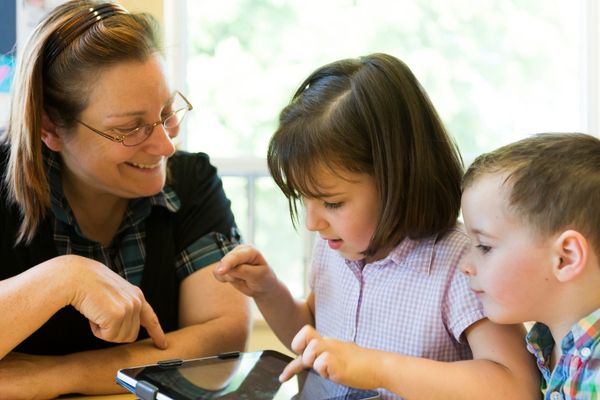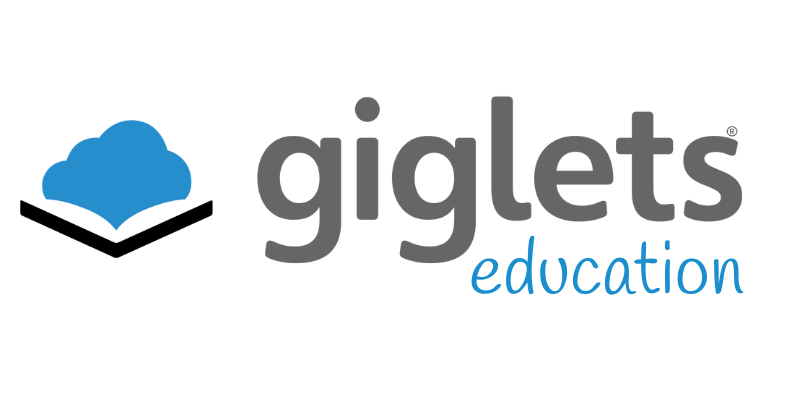- Blog
10/02/2023
Ways to Support Core Skills with an Online Literacy Tool

Have you ever used an online literacy tool in your setting? You may be wondering what are the benefits of using one? Or perhaps how best to integrate it in your lesson plans?
In this blog post we will be looking at ways you can support core skills by using an online literacy tool. It will cover what core skills are, why literacy is so important and the benefits of different forms of media to help you plan, set targets and inspire.
We are raising a digital generation and teaching digital skills to children from a young age will be extremely beneficial as they grow older. Unlike us adults, children will be using digital platforms throughout their education so developing these skills, as well as teaching online safety, are the modern key factors to child development.
Of course, there needs to be a balance and not all learning should be digitally focused. That is why we are taking just one area of learning to share the benefits of a digital resource for the children in your setting.
Children in your setting probably use a wide range of early years resources already, such as outdoor space to promote physical development or an easel with paints to support their creativity and imagination. But how are you encouraging and supporting a child’s digital skills? Which early years resources can you be using to support digital literacy?
We are going to be looking at what core skills we can be supporting through the use of an online literacy tool, which will make up part of your lesson planning.
What core skills are we talking about?
We are focusing on the early years foundation stage, so will be referring to children between the ages of 0 – 5. There will be many branches that come from the core skill, but to keep this straightforward we are focusing on the main areas.
The core skills for children in this age bracket are:
1.Creativity and imagination.
2.Critical thinking and problem solving.
3.Digital literacy.
4.Leadership and personal development.
5.Communication and language.
6.Physical development.
Interestingly you will see that digital literacy is included in the list of core skills. Once upon a time this may not have been considered on this list, however we are realising the benefits of online tools to be inclusive for all children and to promote development in many different areas of learning.
Why is literacy so important?
When we think and talk about literacy, it is important to remember we aren’t just referring to the reading of books. The term “literacy” includes reading, writing (early mark making), talking about books, and enjoying shared experiences through books. The statutory framework emphasises the fundamental importance of literacy and sharing books. For this reason, it is paramount that you are making sure you are covering this area of learning enough in your lesson plans and with children in your setting.
Literacy is a skill that will guide children to better understand the world around them. This in turn develops communication skills and the ways in which children analyse information as they get older.
With the right level of literacy skills, a child’s world opens up. From picturing their favourite characters to bringing to life a story through role play, how you teach literacy in your setting is really important. And of course we all know by now, early reading sparks creativity, curiosity and imagination in young children. The role play that comes from reading can also help children develop other skills such as problem solving and empathy.
Literacy, believe it or not, can also help promote positive routines such as at mealtimes and bedtime. Read about how to encourage a love of reading in the early years and its many benefits.
Benefits of an Online Literacy Tool and how to use it in your setting:
It is important to remember that we all come from different backgrounds, which shape who we are and how we participate in society. This then reflects on how we learn, which means we need to be conscious of the fact that children will not all learn in the same way. When it comes to promoting and teaching literacy, we need to be adaptable and inclusive to every child in a nursery or school setting.
The benefits of an online literacy tool, such as Polylino, is that you can easily adapt what you are teaching to meet the needs of the children in your care. It is important to remember to keep literacy fun and engaging for your children. You could be using different voices for different characters as you read a shared story together on a laptop. Perhaps it is listening to nursery rhymes together and encouraging the children to join in and sing along. It is these activities that are going to promote a creative foundation for developing those core skills we previously talked about.
There is also the benefit of shared learning with parents and carers. You can easily share with them which books you have been reading in the setting and encourage them to talk about these stories at home with their children. A shared link can be sent home for parents to access favourite books within your setting.
It is a great resource that works both ways, as the parents will like to see how their child is making progress, whilst you are encouraging that love of reading to help develop the core skills.
Polylino and your setting.
Have you given Polylino a try yet?
Polylino is a is a fantastic early years resource as our library has been chosen by children’s literature expert Jake Hope. With so many books to choose from, you also then have the option to listen to books being read aloud in over 65 different languages.
We have partnered with literature experts and publishers in the UK to provide high-quality picture books on your smart device or desktop, which are fully aligned with the EYFS. Polylino fully supports early years reading with our range of EYFS books, making reading fun and all the while supporting language development in early childhood.
Now you have a more in depth knowledge as to why supporting core skills using online literacy tools is so beneficial to your setting’s lesson plans as well as the development of the children in the early years.
If you have enjoyed this blog post, you may also like to read:
The best early years resources to help with seasonal planning.
How to continue storytime at home.
10 Ways to create the perfect reading corner in your setting.



